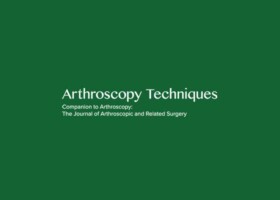
Authors:
Maximilian Petri, Joshua A Greenspoon, Sanjeev Bhatia, Peter J Millett
Abstract:
Massive rotator cuff tears usually occur as ante- rosuperior tears (involving the subscapularis and supraspinatus tendons) or, more commonly, posterosuperior tears (involving the infraspinatus and supraspinatus tendons and sometimes the teres minor tendon). In the absence of glenohumeral osteoarthritis, latissimus dorsi transfer is a treatment option for massive posterosuperior rotator cuff tears that can substantially improve chronically painful, dysfunctional shoulders. As a modification, arthroscopically assisted latissimus dorsi transfer can avoid a deltoid-splitting incision, thereby preserving the deltoid muscle, which may lead to a better clinical outcome.
This report and Video 1 describe the treatment of an active 43-year-old man with severe pain and weakness in the right shoulder after 3 failed rotator cuff repairs elsewhere (2 arthroscopic and, most recently, 1 open). He presented with pain and weakness that resulted in a significant functional deficit. On physical examination, he had a positive external rotation lag sign and a positive drop-arm sign.
Preoperative imaging showed a massive poster- osuperior rotator cuff tear retracted to the glenoid (Fig 1) with no obvious lesion of the subscapularis, as well as a hypermobile os acromiale and tenodesis of the long head of the biceps tendon. Given the patient's young age and good medical condition, as well as the absence of joint space narrowing, he was considered too young for reverse total shoulder replacement. The treatment options included partial rotator cuff repair,4 bridging rotator cuff reconstruction with a graft, superior capsular reconstruction, or latissimus dorsi tendon transfer. Furthermore, open reductioneinternal fixation of the os acromiale was planned because it was considered to be unstable and likely causing dynamic impingement and recurrent rotator cuff tears. Therefore an arthroscopically assisted latissimus approach was not suitable in this case, and an open approach was used; the key surgical risks and technical pearls summarized in Table 1.
For the complete study: Patch-Augmented Latissimus Dorsi Transfer and Open ReductioneInternal Fixation of Unstable Os Acromiale for Irreparable Massive Posterosuperior Rotator Cuff Tear
